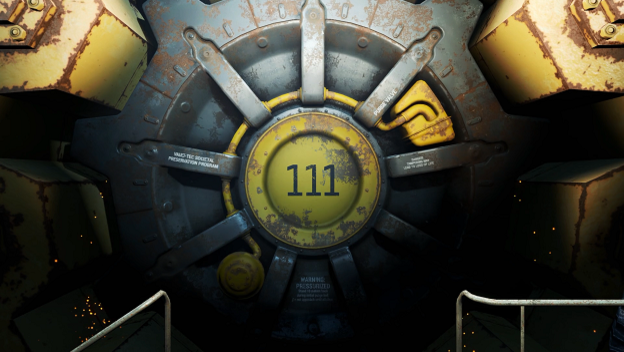The world of Fallout depicts a civilization ruined by devastating nuclear war. It takes place in the future, but firmly holds onto a culture that stagnated during America’s Cold War era, despite immense technological advances spurred by the nuclear age. In the games, players typically take control of a protagonist who has been living in a vault for a large portion of their life as they take their first steps out into the wasteland that once housed a bubbling, effervescent, “American Dream” of a civilization.
At first glance, the vaults in Fallout aren’t entirely unlike a public fallout shelter. Players eventually learn that the vaults in that fictional universe, however, are more akin to a social experiment that just so happens to preserve life in the state of an emergency. But how do these fictional shelters differ from our real world versions? And what kind of world could we expect to step out into, if we ever found ourselves in the precarious situation of needing to hole up inside of one for a while?
Well, for starters, bomb shelters can be hard to find if you live in the United States. While once provided in bulk by the Civil Defense Agency, nowadays, public bomb shelters have mostly been dismantled. However, for the military, government and the ultra rich, there are options available.
In a missile shaft below a Kansas prairie, one developer has begun construction of an underground, cylindrical building to be outfitted with a pool, five years of food, a movie theater, and doomsday-safe condos. So far, four paranoid, uber-rich buyers have purchased luxury condos inside the building for around $7 million. The building will also contain an indoor farm for prolonged sustenance. This rare example of a doomsday plan is more in line with the vaults of Fallout than more conventional examples. For starters, fallout shelters aren’t meant to sustain people for more than a couple of months. In most cases, the intensity of radioactive fallout will have fallen to 1% of its initial levels in as little as two weeks after impact. At that point, people are meant to begin slowly working their way back into the outside world.
The United States Congress used to have its own bunker underneath The Greenbrier luxury resort in West Virginia. This secret bunker, which was code named Project Greek Island, was commissioned when the resort began adding another wing. The bunker was meant to house Congress in the event of a nuclear war, but was decommissioned when its existence was revealed in a Washington Post article in 1992. Nowadays, it is a tourist attraction and Congress has probably set up a secret bunker somewhere else.
The reason the military and government deem it necessary to find shelter during a nuclear event is likely in an attempt to maintain second strike capability. By assuring that the United States will be able to retaliate against aggressors, the country is able to protect itself from nuclear attacks in the first place. This mutually assured destruction serves as a deterrent, and is probably part of the reason public fallout shelters are no longer prevalent. With people in charge alive and ready to give the order, and submarines, silos, and MIRVs, people are far less likely to attack us, so we don’t need to fund as many shelters as was once deemed necessary.

Elsewhere, in neutral Switzerland, bomb shelters are far more common. In fact, Switzerland offers protection for the entirety of its population, with room to spare. They do this by fitting many public buildings with built in bomb shelters. The most impressive feat of this may be the Sonnenberg Tunnel which is a roadway that was adapted to withstand a 1 megaton blast as little as a kilometer away. To adapt the tunnel to be nearly indestructible, and support life for up to 20,000 people between 64 subdivisions, Switzerland spent nearly $32.5 million. The tunnel was reappraised in 2006, and doubts about its high maintenance costs being justified outside of wartime caused it to be shut down. Other issues included whether or not the shelter was actually viable for 20,000 people and the question of whether the massive doors on the construct taking around 24 hours to close made it totally ineffective.
If, however, people of Switzerland did need to use the tunnel to survive a nearby one megaton blast, the world they would emerge to would look very little like the wasteland of Fallout 4. Instead of rubble and debris, people would emerge to what was essentially just ash. As they moved further away from the tunnel, the world would start to look more and more familiar. Since nobody would have lasted decades in one of these shelters, primarily because there would be little reason to do so, they would not have been isolated from the rest of society the way it is depicted in the games. That is, unless they were also tricked into a massive social experiment.
What do you think? If Vault-Tec actually existed (and was a legitimate shelter provider), would you sign up? Do you think it’s a good investment to prepare for the worst with underground shelters?
